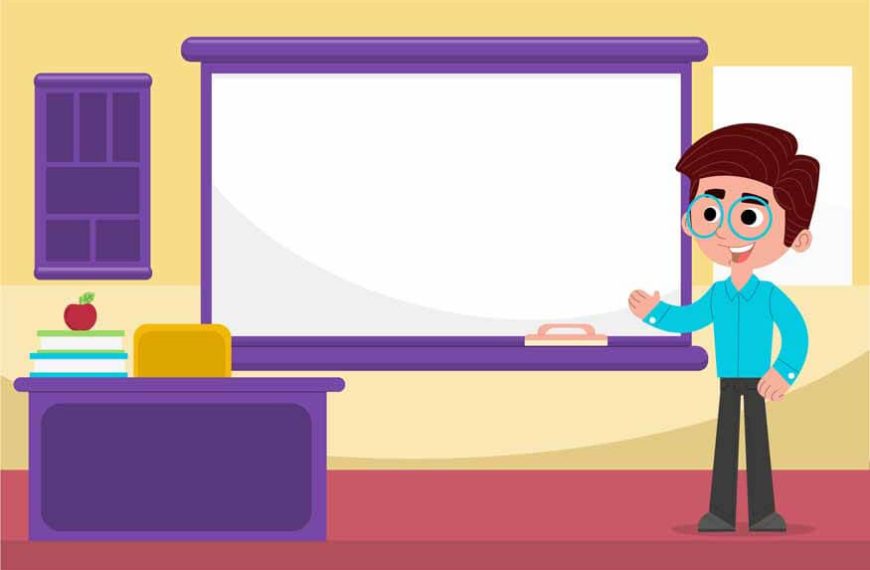In the ever-evolving landscape of education, various teaching methodologies have emerged to cater to the unique needs of each child. One such approach is “Child-Led Learning.” This educational philosophy emphasises empowering children to take charge of their own learning journey, promoting autonomy and curiosity. In this comprehensive article, we will delve into the world of Child-Led Learning, its principles, benefits, and its differences from traditional, objective-led learning.
Understanding Child-Led Learning
Child-Led Learning: A Brief Overview
Child-Led Learning is an educational approach that places the child at the centre of their learning experience. In this model, children actively participate in shaping their curriculum, setting their pace, and choosing areas of interest to explore. It is a pedagogical philosophy that recognizes children as natural learners with intrinsic motivation.
Objective-Led Learning: The Conventional Approach
Objective-Led Learning, often found in traditional educational settings, is a teacher-centred approach. It emphasises predefined learning objectives, standardised curricula, and uniform assessments. Students are expected to meet these predetermined goals, often leaving little room for individual exploration and self-discovery.
Key Differences Between Child-Led and Objective-Led Learning
- Flexibility vs. Rigidity: Child-Led Learning is flexible, allowing students to adapt to their learning needs, while Objective-Led Learning follows a rigid curriculum with fixed goals.
- Intrinsic vs. Extrinsic Motivation: Child-Led Learning encourages intrinsic motivation, while Objective-Led Learning often relies on extrinsic motivators such as grades.
- Personalised vs. Standardised: Child-Led Learning is personalised, tailored to each child’s abilities and Child interests, while Objective-Led Learning follows standardised curricula.
- Passion-Driven vs. Compliance-Driven: Child-Led Learning is passion-driven, nurturing a love for learning, while Objective-Led Learning can be compliance-driven.
- Holistic vs. Fragmented Learning: Child-Led Learning promotes holistic learning, whereas Objective-Led Learning can result in fragmented knowledge.
Benefits of Child-Led Learning
Child-Led Learning has several remarkable advantages that go beyond traditional education:
- Intrinsic Motivation: Children develop a genuine passion for learning, making them self-motivated, enthusiastic learners throughout life.
- Critical Thinking and Problem-Solving: They acquire valuable problem-solving skills as they explore, experiment, and make choices independently.
- Individualised Progress: Learning is customised, ensuring each child progresses at their own pace, reducing stress and anxiety.
- Fostering Independence: Child-Led Learning cultivates independence, empowering children to become self-reliant and resourceful.
- Stronger Self-Identity: Children have a better understanding of their strengths, weaknesses, and interests, aiding them in choosing future paths.
Preparing for the Real World
Child-Led Learning is also essential for preparing children for the real world:
- Adaptability: Children learn to adapt to changing circumstances, a critical skill in the rapidly evolving modern world.
- Curiosity and Creativity: Encouraged to explore and ask questions, they develop curiosity and creativity, valuable attributes in any profession.
- Collaboration and Communication: By making choices and decisions, they become effective communicators and collaborators.
- Resilience: The freedom to make mistakes fosters resilience, helping them face challenges and setbacks with confidence.
Implementing Child-Led Learning
The Role of Educators
- Facilitators, Not Dictators: They act as facilitators, guiding and supporting children while respecting their choices.
- Resource Providers: Educators provide the necessary resources and opportunities for exploration.
- Observation and Assessment: They observe each child’s progress, adapting strategies to meet their individual needs.
Creating a Supportive Environment
- Safe and Stimulating Spaces: Learning environments should be safe, stimulating, and encourage exploration.
- Access to Resources: Ensure access to a variety of learning resources, both digital and physical.
- Time for Exploration: Children should have the freedom to explore and experiment without rigid schedules.
Parental Involvement
- Understanding and Trust: Parents must understand the philosophy of Child-Led Learning and trust their child’s ability to make choices.
- Guidance and Encouragement: Offer guidance and encouragement without imposing their own desires on their child’s learning journey.
Challenges and Concerns
Child-Led Learning is not without its challenges:
- Assessment: It can be challenging to assess and measure learning progress when it is individualised.
- Curriculum Alignment: Integrating Child-Led Learning with standardised curricula can be complex.
- Resource Availability: Not all schools have the resources and infrastructure to implement this approach effectively.
- Parental Resistance: Some parents may resist this approach, preferring traditional methods.
Child-Led Learning and Emotional Development
Child-Led Learning goes beyond academics; it also nurtures emotional intelligence:
- Self-Awareness: By choosing their own learning path, children become more self-aware, understanding their interests, strengths, and weaknesses.
- Self-Regulation: They learn to manage their time, emotions, and stress levels, crucial skills in the real world.
- Empathy and Social Skills: The autonomy to make choices fosters empathy and social skills as children interact with peers and educators.
- Respect for Diversity: By exploring their interests, children appreciate the diversity of knowledge, culture, and perspectives, promoting open-mindedness.
Child-Led Learning in Practice
Implementing Child-Led Learning involves a few key steps:
- Interest Discovery: Identifying children’s interests and passions is the first step. This can be achieved through discussions, observations, and open-ended questions.
- Resource Availability: Ensuring access to diverse learning resources is essential. Libraries, digital platforms, and hands-on materials all play a role.
- Goal Setting: Help children set achievable, short-term goals based on their interests.
- Documentation and Reflection: Encourage children to document their learning journey through journals, art, or digital platforms. Reflection helps them understand their progress.
- Feedback and Adaptation: Regularly discuss their interests and adjust the learning experience accordingly.
Real-Life Success Stories
Child-Led Learning has inspired numerous success stories:
- Innovators and Entrepreneurs: Many successful entrepreneurs and innovators credit their unconventional learning paths for their creativity and problem-solving abilities.
- Passionate Professionals: Individuals who followed their passions from a young age often find their careers deeply fulfilling.
- Confident Leaders: Child-Led Learning fosters confidence and leadership skills, paving the way for future leaders.
The Future of Education
Child-Led Learning is gaining recognition and acceptance in modern education:
- Incorporating in Traditional Systems: Traditional schools are adopting Child-Led Learning principles alongside standardised curricula, aiming to create more well-rounded individuals.
- Homeschooling: Many homeschooling families embraced this philosophy, tailoring their children’s education to their unique interests and needs.
- Learning Centers and Alternative Schools: Specialised learning centres and alternative schools are emerging, offering Child-Led Learning as their primary pedagogy.
In conclusion, Child-Led Learning is a transformative educational approach that nurtures children’s curiosity, passion, and holistic development. It equips them with vital skills for the future while fostering lifelong learning. As we continue to explore and adapt to various educational methodologies, Child-Led Learning stands as a beacon of individual empowerment, preparing the next generation to face a dynamic world with resilience and self-assuredness.
To explore EuroKids’ Child-Led Learning programs and discover how they can benefit your child’s education, visit our website.
















